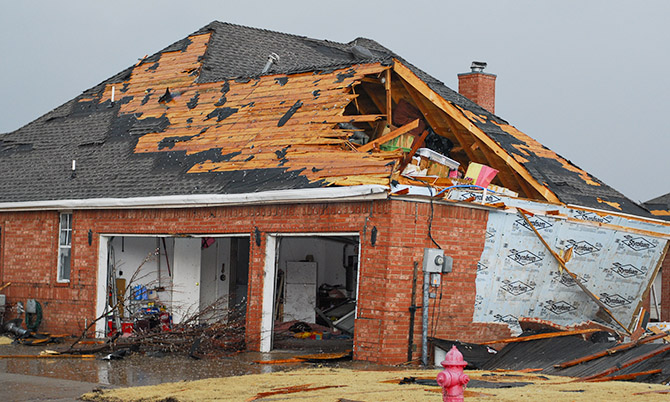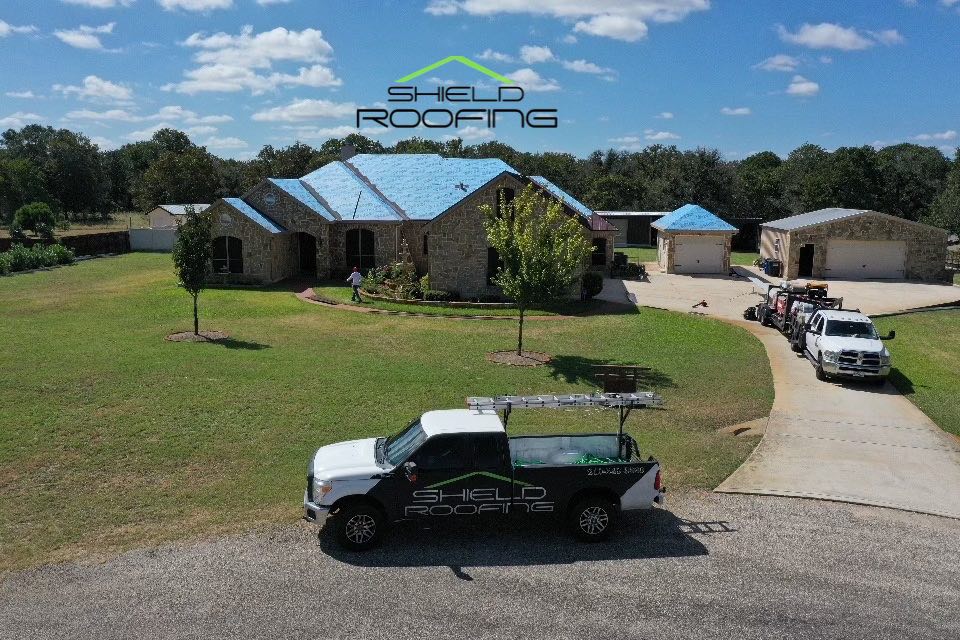Homeowners may experience a wide range of issues related to their roof over time. These can include simple wear and tear, age-related damage, extreme weather conditions, or even structural damage.
When it comes to the latter, it is important for homeowners to take action as soon as possible in order to prevent further harm from occurring. The consequences associated with ignoring suspected structural damage can be severe.
Not only can this lead to more extensive repairs being required later on, but also create safety hazards for those living in the home – further compounding the problem. Thus, it is critical for individuals to have an understanding of how they should respond when faced with such circumstances.
Inspecting Your Roof
Maintaining the structural integrity of a roof is essential for ensuring the safety and comfort of all occupants in a building. It is important to undertake preventive maintenance as soon as possible if there are any suspicions that damage has occurred, or may occur shortly.
An initial step could involve visually inspecting the interior and exterior of the roof for signs such as water and moisture stains, cracks in the beams, shingles which have come loose, etc.
If necessary, professional assistance should be sought from an experienced contractor who can properly assess if structural damage has been caused; this assessment will ensure that appropriate repair work can be carried out using waterproofing techniques that prevent further deterioration.
In addition to providing expert advice on how to maintain the condition of your roof over time, they will also provide cost estimates for any repairs needed.
Understanding The Signs Of Structural Damage

Understanding the signs of structural damage is essential for preventing future issues. It is important to assess both visible and hidden areas, such as in between roof decking or rafters that may be difficult to access.
Look for any evidence of dampness inside your home, which could indicate a leaky roof due to damaged shingles or flashing. Additionally, check the underside of your eaves and inspect places where two different materials come together, like around windows or vents, if they have become loose or cracked over time.
Examine the condition of your gutters; blocked gutters can lead to water pooling on your roof which can cause significant damage. Lastly look out for sagging along trusses and other support beams underneath the roofline as this can be an indication that there are structural problems with the roof itself.
Pay close attention to these warning signs so you can take action before further costly repairs are needed.
Contacting A Professional
As soon as structural damage to a roof is suspected, it is important to take action swiftly.
The first step should be identifying the extent of the damage and assessing potential costs for repair or replacement.
Depending on the size of the structure and its complexity, this could involve researching contractors who specialize in roofing projects and obtaining quotes from multiple companies.
It may also be necessary to hire an engineer to inspect the roof and provide a report with detailed technical information about any areas that need attention.
Taking these steps will ensure that decisions are made based on accurate data and reliable experts rather than guesswork or assumptions.
Understanding all available options helps homeowners make informed choices regarding their roofs’ future—whether that involves repairing small sections or replacing entire systems.
Obtaining An Accurate Diagnosis
In order to identify and prevent any further damage, it is essential that the structural integrity of a roof be properly assessed. If one suspects there may be structural issues present, they should seek out an experienced professional for help in obtaining an accurate diagnosis.
Such a specialist will have the necessary skills and expertise to evaluate whether existing damage needs repair or if preventive measures need to be taken. The cost of such repairs can vary depending on the extent of the damage and type of materials used in its construction; however, taking prompt action to address potential issues can save money down the road due to avoiding costly future repairs.
In addition, investing in regular maintenance and inspections by qualified professionals can go a long way towards preventing problems from occurring in the first place. Investing time and resources into care now can lead to savings later—and peace of mind throughout.
Determining The Appropriate Repair Method
When suspecting structural damage to a roof, it is important to accurately assess the extent of the damage and identify its cause. Only then can appropriate repair methods be identified. Assessing costs should also be taken into consideration as this will determine if repairs are affordable or not.
The most effective way of determining the amount of damage done to a roof is by performing an inspection, which involves examining both internal and external aspects such as walls, insulation, ceiling joists, rafters and other supporting components.
The next step in identifying the causes of structural damage includes analyzing weather data around the time when the problem was first noticed and inspecting any existing signs of water and moisture infiltration. Other factors that could contribute to roof damage include improper installation techniques, inadequate flashing details, poor maintenance practices such as neglecting regular inspections or failing to address minor problems before they become major ones.
With these considerations taken into account, homeowners can select the best possible course of action for their particular situation.
Implementing A Permanent Solution
If you suspect that there is structural damage to your roof, it is important to take action as soon as possible.
This can be done through preventative maintenance and cost estimation of the repair or replacement process.
The first step in preventing further damage would be inspecting the roof for any signs of deterioration such as missing shingles, exposed nails, broken flashings, and deteriorated caulking around vents and pipes.
After identifying issues, a qualified contractor should be contacted to provide an estimate on repairs or replacements needed.
Along with cost estimations, they will also determine what materials are best suited for your climate and home structure so that future problems can be avoided.
Taking The Necessary Precautions
If you suspect that there is structural damage to your roof, it is important to take the necessary precautions in order to protect yourself and prevent further damage.
The first step should be to contact a professional contractor who can properly assess the condition of the roof and provide recommendations for repair or replacement.
Additionally, if any repairs are needed, homeowners may want to consider investing in preventive maintenance plans that include regular inspections by qualified professionals so as to ensure that their roofs remain structurally sound over time.
It is also essential to use safety equipment when performing repairs on your own roof, including wearing protective gear such as hard hats, goggles, and gloves; using ladders designed for working at heights; and having someone nearby who can help stabilize the ladder.
To minimize potential liability risks associated with do-it-yourself work on a roof, check local building regulations before beginning any kind of repair project.
Taking these steps will not only help keep you safe but also allow you to properly address any issues that have arisen due to structural damage to your roof.
Conclusion
It is important to take action when detecting signs of structural damage on a roof.
Taking the time and effort to inspect, contact professionals, obtain an accurate diagnosis, determine the appropriate repair method, implement a permanent solution, and taking necessary precautions will help ensure that all potential dangers are detected and addressed in a timely manner.
With proper care and maintenance, it is possible to keep roofs structurally sound for many years.

